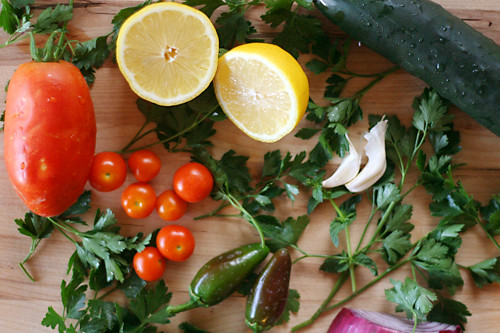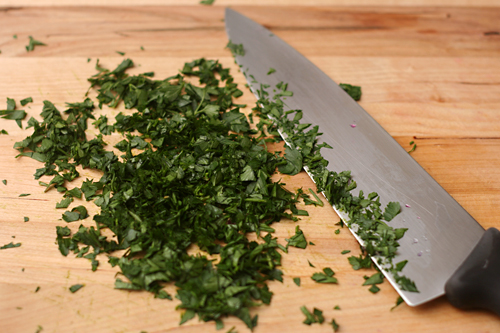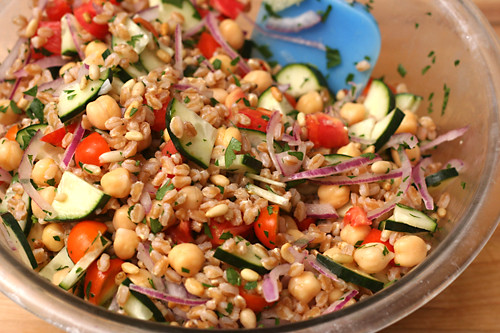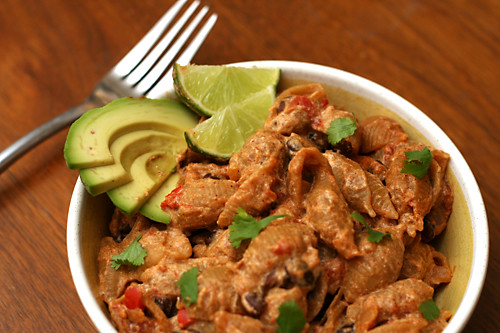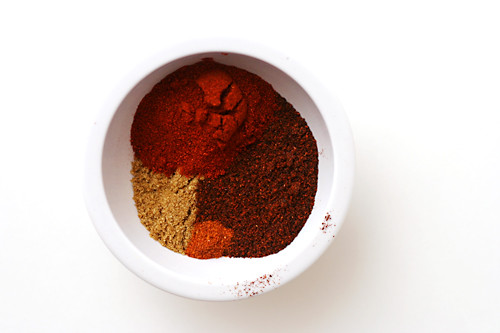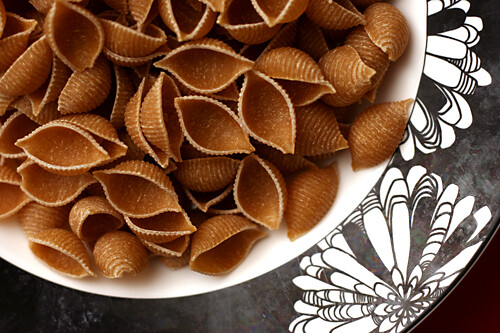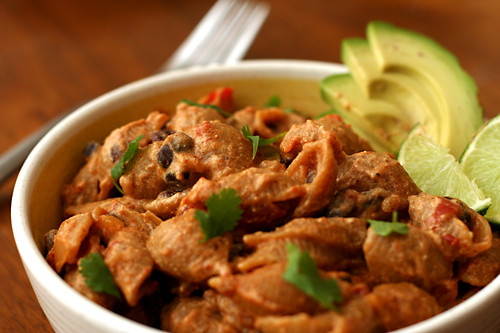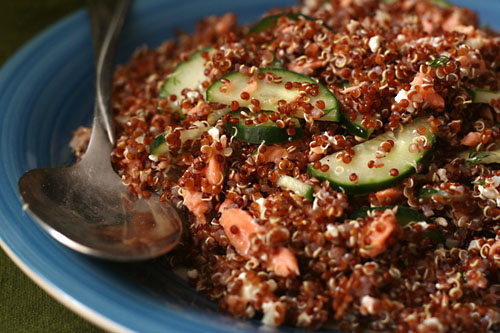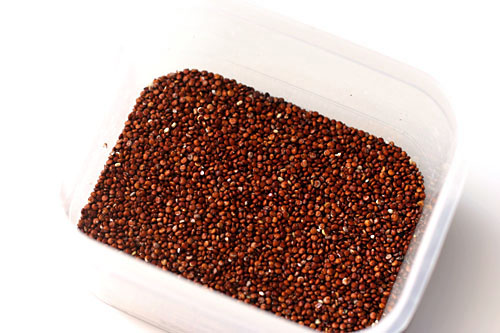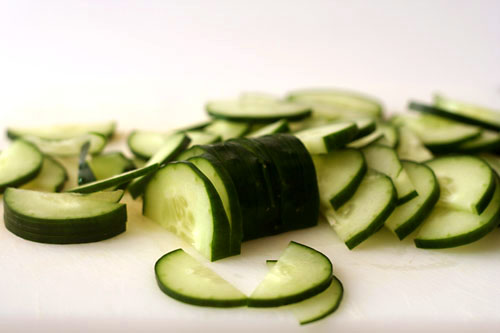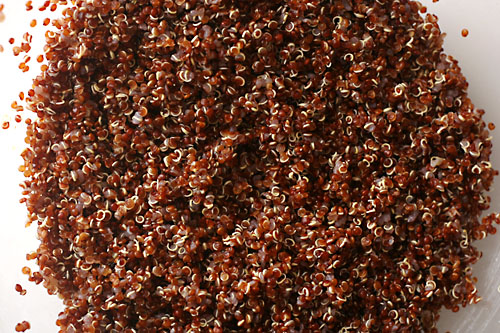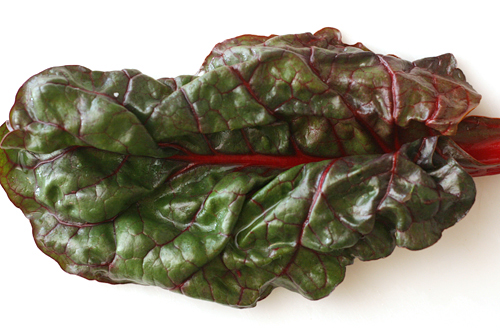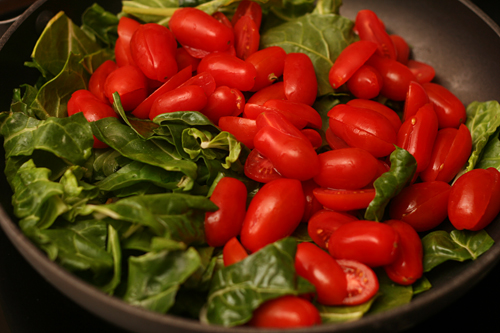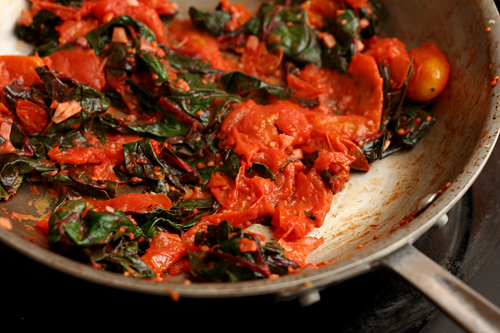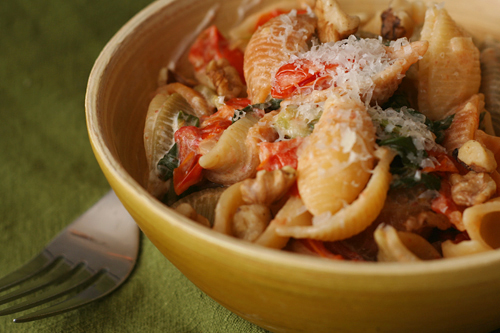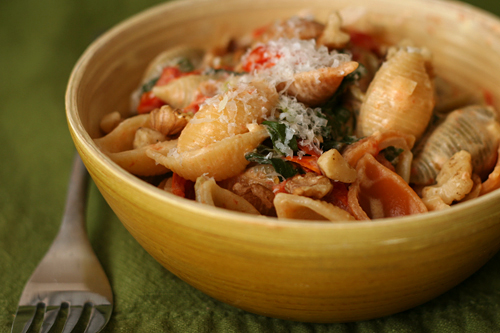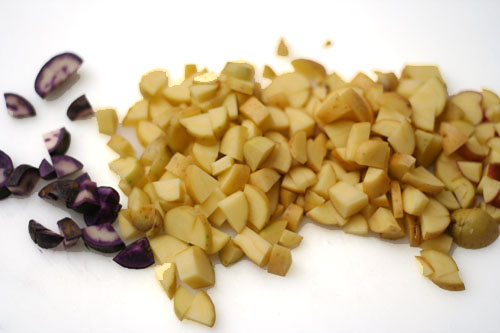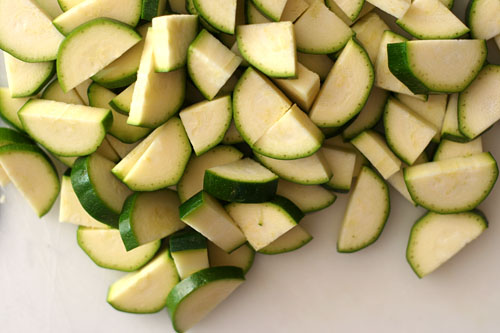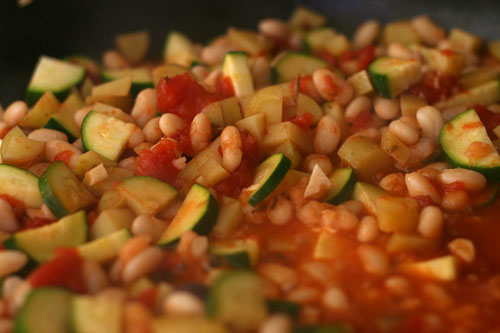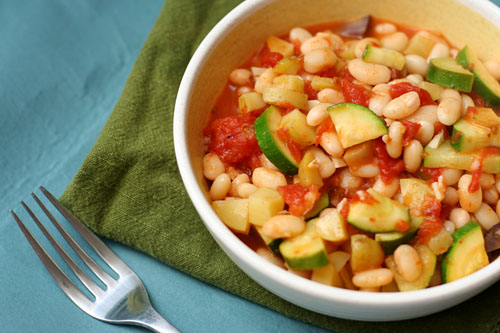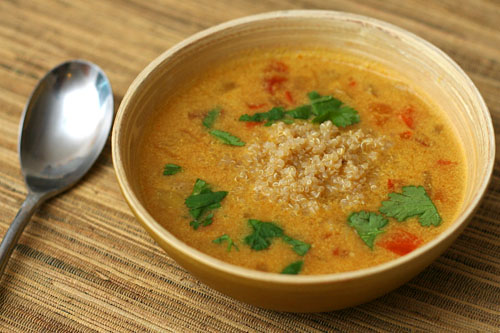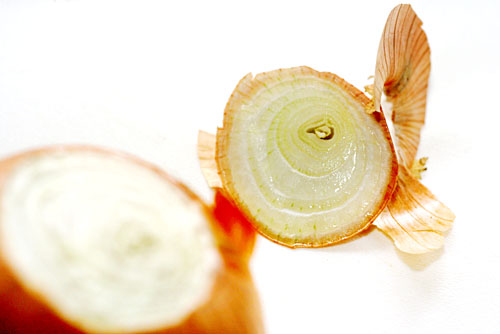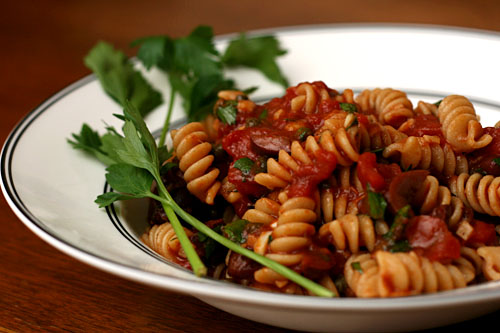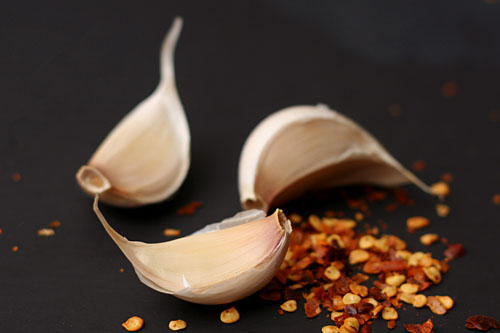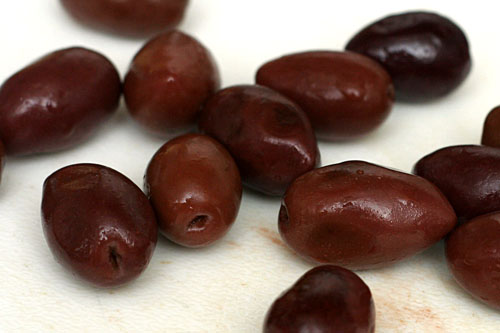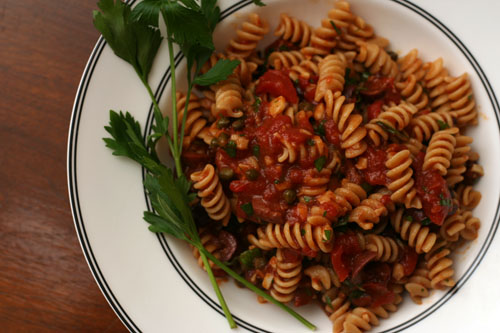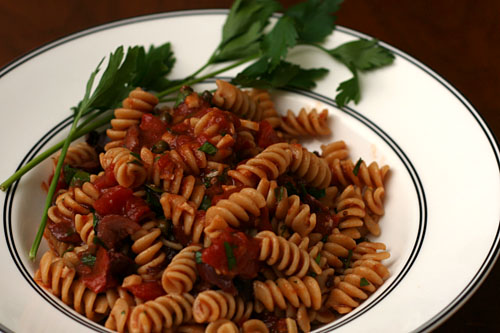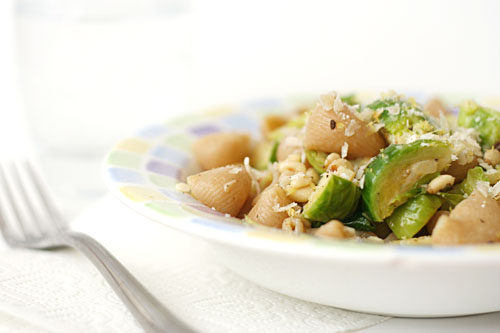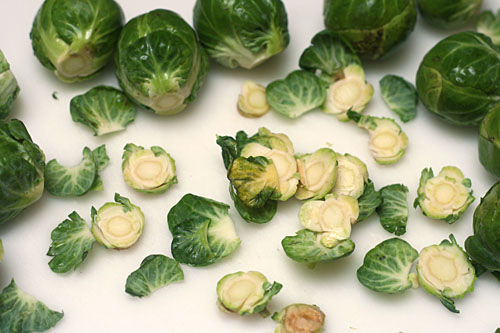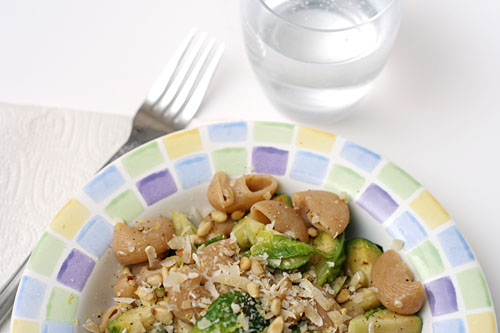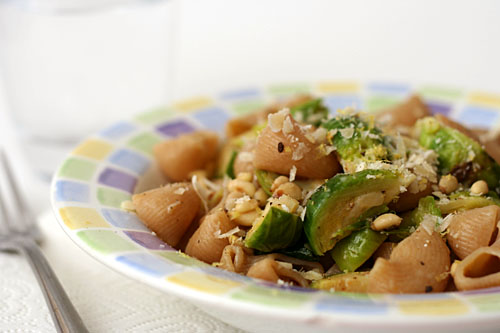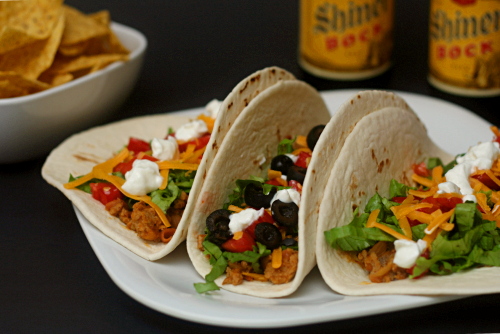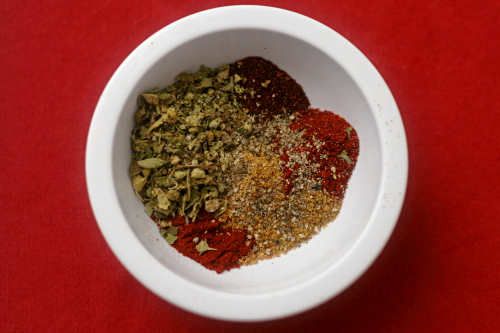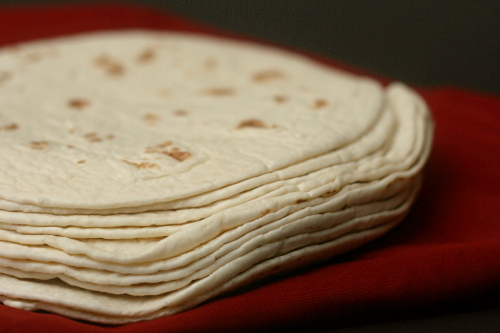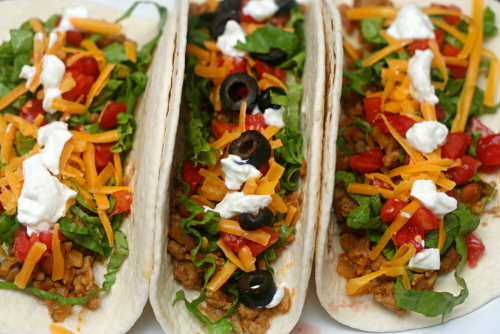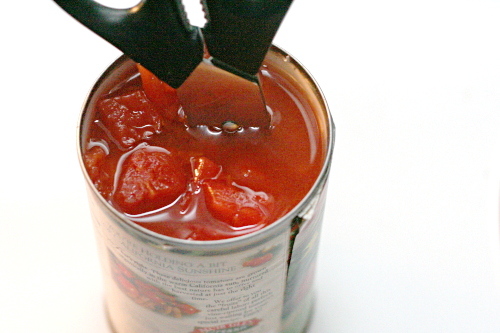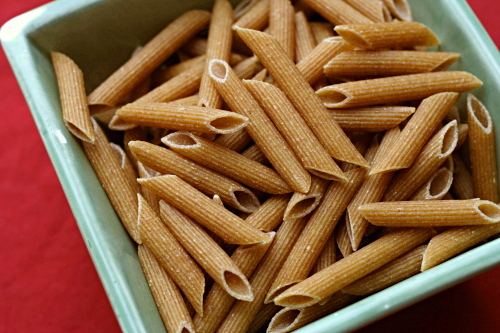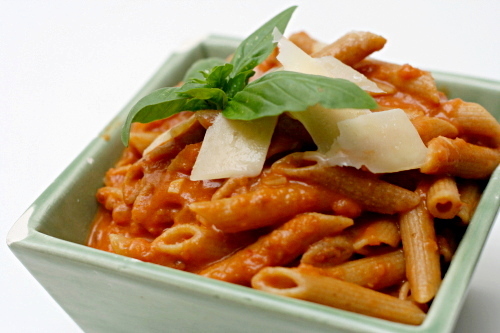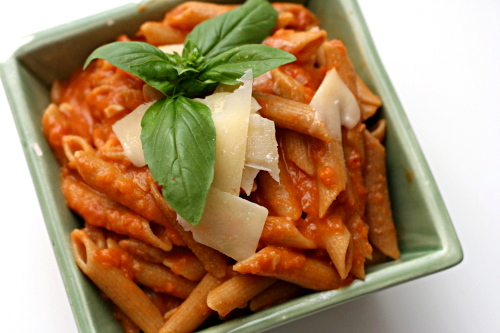It’s a good thing I really like farro, because I accidentally bought 26 dollars worth of it. Apparently I need to pay more attention to the prices on the bulk bins. I should also start enjoying barley or wheat berries or some other equally healthy grain that doesn’t cost $12 per pound. (I actually looked at the prices the next time I was at the store, and farro cost about five times as much as the other grains.)
I can’t pinpoint exactly what it is about farro that I like so much. I don’t think the flavor of the different grains are so different that I notice a big difference once dressing and other ingredients are mixed in, so it must be more textural. It’s all about a balance of the tender and the chewy. Rice is soft and tender. Barley is very chewy. Farro is just right.
Usually I mix it with caramelized onions and feta, which, with a squirt of hot sauce, becomes one of my favorite meals that also happens to be incredibly healthy. But having two pounds of farro is good incentive to branch out. There are few things that aren’t improved with the addition of summer vegetables, pine nuts, chickpeas, and a squirt of lemon juice, farro included. It looks like I have another delicious farro meal that also happens to be healthy.
One year ago: Grilled Potato and Vegetable Salad
Two years ago: Casatiello
Three years ago: Soba Salad with Feta and Peas
Printer Friendly Recipe
Farro and Pine Nut Salad (adapted from Self magazine via epicurious)
If you choose a grain other than farro, your cooking time will probably be different.
The original recipe included jalapenos, which is why they’re shown in the photo above, but I decided not to use them.
1 cup farro (or another whole grain, such as wheat berries, barley, or brown rice)
salt
1 clove garlic, unpeeled
¼ cup pine nuts
Juice from 1 lemon
½ small red onion, very thinly sliced
2 large heirloom tomatoes, chopped, or 1 pint grape tomatoes, halved
1 small cucumber, quartered and sliced ⅛-inch thick
1 (15-ounce) can chickpeas, rinsed and drained
1 cup feta, crumbled
3 tablespoons extra-virgin olive oil
¼ cup chopped fresh parsley
1. Bring 2 quarts of water to a roiling boil; add the farro and 2 teaspoons of salt. Cook for 20 minutes, until the farro is tender but slightly chewy. Drain.
2. Squeeze the juice of the lemon into a large bowl; add the onions and a pinch of salt. Set aside.
3. Heat a small not-nonstick pan over medium heat. Add the garlic and toast it, turning once, until browned, about 2 minutes. Remove the garlic from the pan. Add the pine nuts to the pan and cook, stirring constantly, until fragrant and slightly browned, 3-4 minutes. Remove from the pan. When the garlic is cool enough to handle, peel and mince it.
4. Stir the drained farro into the onion vinegar mixture, then add the remaining ingredients. Let the salad stand at room temperature for at least 10 minutes before serving.

